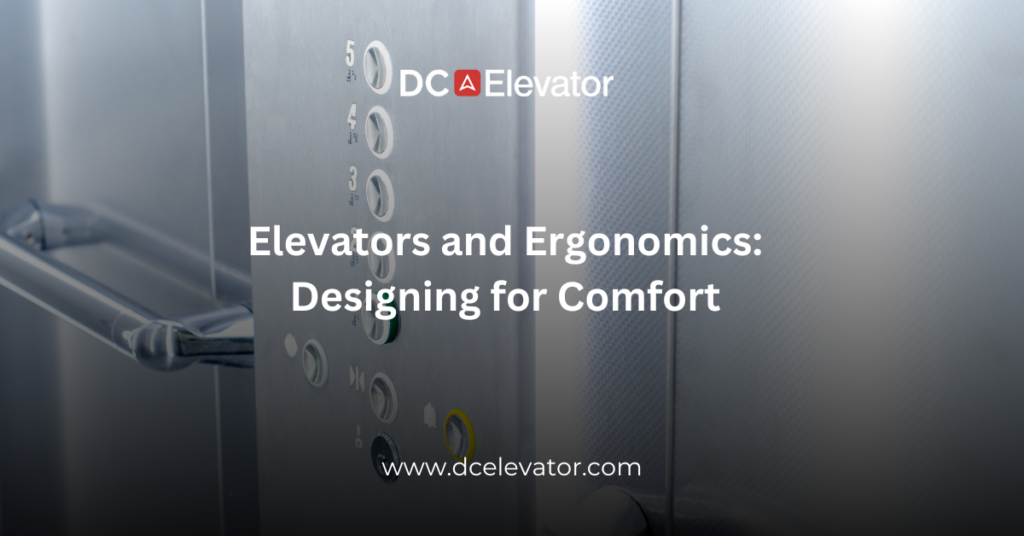Elevator design plays a crucial role in enhancing user comfort and overall experience. As buildings continue to grow taller and more complex, the need for ergonomically designed elevators becomes increasingly important. From spacious cabins to intuitive controls, ergonomic elevator design ensures that users feel comfortable, safe, and satisfied. In this blog post, we will explore the key aspects of ergonomic elevator design and how it contributes to a better experience for all users.
What is Ergonomic Elevator Design?
Ergonomic elevator design focuses on creating a user-friendly environment that caters to the needs of all passengers. This involves considering factors like cabin space, lighting, control placement, and ride quality to minimize discomfort and enhance the overall experience.
Key Aspects of Ergonomic Elevator Design
Spacious Cabins
A spacious elevator cabin allows passengers to move comfortably, whether they are alone or in a group. Adequate space is especially important for wheelchair users, families with strollers, and individuals carrying bulky items.
-
- Impact: Larger cabins reduce feelings of claustrophobia and improve passenger flow, particularly during busy times.
- Consideration: Ensure compliance with accessibility standards that dictate minimum cabin sizes and layouts to accommodate all users.
Intuitive Controls and Panel Design
The placement and design of elevator controls significantly affect user comfort. Ergonomically designed panels are easy to reach, clearly labeled, and intuitive to use.
-
- Impact: Intuitive controls reduce confusion and make the elevator easier to navigate for people of all ages and abilities.
- Consideration: Use large, well-lit buttons, Braille labels, and audible floor indicators to cater to a wide range of users.
Smooth Ride Quality
The comfort of the ride itself is a critical component of ergonomic elevator design. A smooth, quiet ride minimizes discomfort and enhances the overall experience.
-
- Impact: Reducing vibrations, jerks, and sudden stops ensures that passengers feel stable and secure during their journey.
- Consideration: Regular maintenance and attention to mechanical adjustments help maintain optimal ride quality.
Adequate Lighting and Ambiance
Lighting plays a significant role in creating a welcoming and comfortable environment inside an elevator. Bright, evenly distributed lighting helps passengers feel safe and reduces the sense of confinement.
-
- Impact: Good lighting improves visibility, making it easier for users to locate controls and navigate the cabin.
- Consideration: Consider energy-efficient LED lights with a warm tone for a pleasant ambiance that reduces glare and eye strain.
Seating and Handrails
Handrails and seating options can greatly enhance the comfort of passengers, especially for elderly users or those with mobility challenges.
-
- Impact: Handrails provide stability, while seating offers relief for passengers who may struggle to stand for extended periods.
- Consideration: Ensure that handrails are securely installed at a comfortable height and that seating, if available, is accessible and does not obstruct movement.
Accessibility Features
Elevators should be designed to be accessible to all, including individuals with disabilities. This includes features like wide doors, low control panels, and audio signals.
-
- Impact: Accessible design ensures that everyone, regardless of physical ability, can use the elevator comfortably and independently.
- Consideration: Follow accessibility guidelines and gather feedback from users with disabilities to continually improve the design.
Temperature and Ventilation Control
Temperature and air quality are often overlooked aspects of elevator design, but they significantly impact passenger comfort.
-
- Impact: Proper ventilation and climate control ensure a comfortable environment, preventing the cabin from becoming too hot or stuffy.
- Consideration: Integrate efficient ventilation systems to maintain air quality and comfort, especially in high-traffic buildings.
The Benefits of Ergonomic Elevator Design
- Enhanced User Satisfaction: Ergonomic design prioritizes passenger comfort, leading to higher levels of satisfaction among tenants and visitors.
- Improved Accessibility: Thoughtful design elements ensure that elevators are usable by everyone, promoting inclusivity.
- Increased Efficiency: By enhancing the overall user experience, ergonomic elevators can improve traffic flow and reduce congestion, particularly in busy buildings.
- Positive Building Image: A well-designed elevator reflects positively on the building, contributing to its reputation as a modern, user-friendly environment.
Conclusion
Ergonomic elevator design is essential for creating a comfortable, efficient, and inclusive environment for all users. By focusing on key elements such as cabin space, intuitive controls, smooth ride quality, and accessibility, building owners and managers can enhance the overall experience and satisfaction of their tenants and visitors. Investing in ergonomic design is not just about aesthetics; it’s about prioritizing the comfort and well-being of everyone who uses the building.
